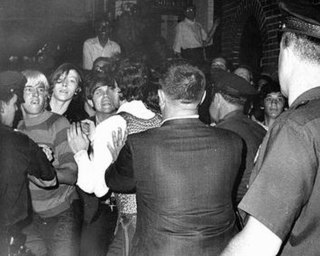
The Stonewall riots, also known as the Stonewall uprising, Stonewall rebellion, or simply Stonewall, were a series of spontaneous protests by members of the gay community in response to a police raid that began in the early morning hours of June 28, 1969, at the Stonewall Inn in the Greenwich Village neighborhood of Lower Manhattan in New York City. Patrons of the Stonewall, other Village lesbian and gay bars, and neighborhood street people fought back when the police became violent. The riots are widely considered the watershed event that transformed the gay liberation movement and the twentieth-century fight for LGBT rights in the United States.

The homophile movement is a collective term for the main organisations and publications supporting and representing sexual minorities in the 1950s to 1960s around the world. The name comes from the term homophile, which was commonly used by these organisations. At least some of these organisations are considered to have been more cautious than both earlier and later LGBT organisations; in the U.S., the nationwide coalition of homophile groups disbanded after older members clashed with younger members who had become more radical after the Stonewall riots of 1969.

One, Inc., or One Incorporated, was one of the first gay rights organizations in the United States, founded in 1952.

The gay liberation movement was a social and political movement of the late 1960s through the mid-1980s in the Western world, that urged lesbians and gay men to engage in radical direct action, and to counter societal shame with gay pride. In the feminist spirit of the personal being political, the most basic form of activism was an emphasis on coming out to family, friends, and colleagues, and living life as an openly lesbian or gay person.

The NYC Pride March is an annual event celebrating the LGBTQ community in New York City. The largest pride parade in North America and among the largest pride events in the world, the NYC Pride March attracts tens of thousands of participants and millions of sidewalk spectators each June. The parade route through Lower Manhattan traverses south on Fifth Avenue, through Greenwich Village, passing the Stonewall National Monument, site of the June 1969 riots that launched the modern movement for LGBTQ+ rights.

Kiyoshi Kuromiya was a Japanese-American author and civil rights, anti-war, gay liberation, and HIV/AIDS activist. Born in Wyoming at the World War II–era Japanese American internment camp known as Heart Mountain, Kuromiya became an aide to Martin Luther King Jr. and a prominent opponent of the Vietnam War during the 1960s.
This is a list of notable events in the history of LGBT rights that took place in the 1960s.
LGBT movements in the United States comprise an interwoven history of lesbian, gay, bisexual, transgender and allied movements in the United States of America, beginning in the early 20th century and influential in achieving social progress for lesbian, gay, bisexual, transgender and transsexual people.

LGBT pride is the promotion of the self-affirmation, dignity, equality, and increased visibility of lesbian, gay, bisexual, and transgender (LGBT) people as a social group. Pride, as opposed to shame and social stigma, is the predominant outlook that bolsters most LGBT rights movements. Pride has lent its name to LGBT-themed organizations, institutes, foundations, book titles, periodicals, a cable TV channel, and the Pride Library.

Craig L. Rodwell was an American gay rights activist known for founding the Oscar Wilde Memorial Bookshop on November 24, 1967 - the first bookstore devoted to gay and lesbian authors - and as the prime mover for the creation of the New York City gay pride demonstration. Rodwell, who was already an activist when he participated in the 1969 Stonewall uprising, is considered by some to be the leading gay rights activist in the early, pre-Stonewall, homophile movement of the 1960s.
The North American Conference of Homophile Organizations was an umbrella organization for a number of homophile organizations. Founded in 1966, the goal of NACHO was to expand coordination among homophile organizations throughout the Americas. Homophile activists were motivated in part by an increase in mainstream media attention to gay issues. Some feared that without a centralized organization, the movement would be hijacked, in the words of founding member Foster Gunnison Jr., by "fringe elements, beatniks, and other professional non-conformists".
The Annual Reminders were a series of early pickets organized by gay organizations, held yearly from 1965 through 1969. The Reminder took place each July 4 at Independence Hall in Philadelphia and were among the earliest LGBT demonstrations in the United States. The events were designed to inform and remind the American people that gay people did not enjoy basic civil rights protections.
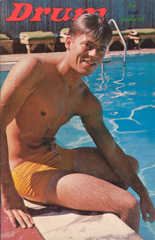
Drum was an American gay men's culture and news magazine published monthly in Philadelphia, Pennsylvania, featuring homoerotic photographs as well as news, book reviews, editorials, and fiction. It was published beginning in October 1964 by the homophile activist group the Janus Society as a continuation of the group's monthly newsletter. Edited by Clark Polak, the president of the Janus Society, the magazine represented Polak's radical approach to the homophile movement by emphasizing sexual liberation when other homophile organizations were focused on assimilating with straight society.

The development of LGBT culture in Philadelphia can be traced back to the early 20th century. It exists in current times as a dynamic, diverse, and philanthropically active culture with establishments and events held to promote LGBT culture and rights in Philadelphia and beyond.
East Coast Homophile Organizations (ECHO) was established in January 1962 in Philadelphia, to facilitate cooperation between homophile organizations and outside administrations. Its formative membership included the Mattachine Society chapters in New York and Washington D.C., the Daughters of Bilitis chapter in New York, and the Janus Society in Philadelphia, which met monthly. Philadelphia was chosen to be the host city, due to its central location among all involved parties.
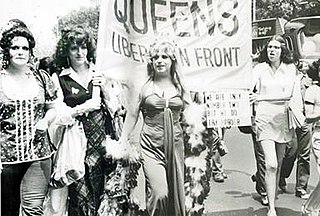
Queens Liberation Front (QLF) was a homophile group primarily focused on transvestite rights advocacy organization in New York City. QLF was formed in 1969 and active in the 1970s. They published Drag Queens: A Magazine About the Transvestite beginning in 1971. The Queens Liberation Front collaborated with a number of other LGBTQ+ activist groups, including the Gay Activists Alliance and the Street Transvestite Action Revolutionaries.
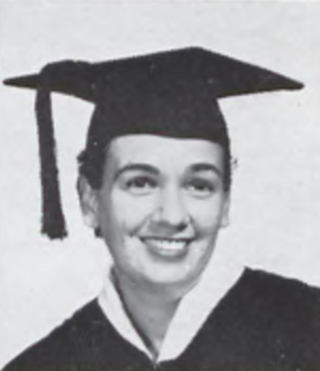
Ada C. Bello was a Cuban-American LGBT rights activist and medical laboratory researcher of Portuguese descent. She was a founder of the Philadelphia Chapter of Daughters of Bilitis and the Homophile Action League. Bello led activism efforts for the LGBT community beginning in the late 1960s and served in advocacy roles including as a board member of the LGBT Elder Initiative.
Ellen Broidy is an American gay rights activist. She was one of the proposers and a co-organizer of the first gay pride march.
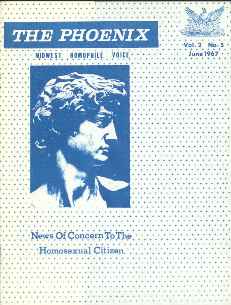
The Phoenix: Midwest Homophile Voice was an American homophile magazine that ran from 1966 to 1972. It was published by The Phoenix Society for Individual Freedom, in Kansas City, Missouri, and was the first LGBT magazine in the Midwest. The magazine was founded by Drew Shafer, a gay rights activist from Kansas City (KC), who was known for bringing the homophile movement to KC. The magazine's motto was: “Rising From the Fiery Hell of Social Injustice, The Wings of Freedom Will Never Be Stilled.”












